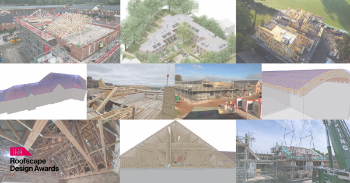Site induction
In its broadest sense, the word 'induction' refers to: 'A person’s formal introduction to an organisation and its procedures.' Ref https://www.cips.org/knowledge/glossary-of-terms/
Site induction is the process of ensuring workers on construction sites are fully informed about the organisation and operation of the site and of their responsibilities. It focuses in particular on safety aspects of the site.
The CDM regulations require that principal contractors ensure suitable site inductions are provided. They also require that contractors must provide each worker under their control with appropriate supervision, instructions and information so that construction work can be carried out, so far as is reasonably practicable, without risks to health and safety, and that this must include a suitable site induction, where not already provided by the principal contractor.
Site inductions may also be necessary for people visiting the site who might not necessarily be considered ‘workers’. Site inductions should be proportionate to the nature of the visit; escorted visitors need not have the level of detail that unescorted visitors should have.
It is important that this is not just a box-ticking exercise, but that it is given suitable time and priority, and is prepared specifically for the project in question, rather than following a pre-prepared generic format. It should highlight any particular risks and control measures that those working on, or visiting the project need to know about. Information should be clear and tailored to the audience. A record of the information and attendees should be kept, and ideally, some form of recorded assessment and declaration should be carried out to ensure that attendees have understood what they have been told.
Managing health and safety in construction, Construction (Design and Management) Regulations 2015, Guidance on Regulations suggests the following issue should be considered:
- Senior management commitment to health and safety.
- Outline of the project.
- Management of the project.
- First-aid arrangements.
- Accident and incident reporting arrangements.
- Arrangements for briefing workers on an ongoing basis, e.g. toolbox talks.
- Arrangements for consulting the workforce on health and safety matters.
- Individual worker’s responsibility for health and safety.
They might include information about:
- Site layout.
- Site welfare facilities.
- Site rules.
- Details of key personnel such as; supervisors, safety officers, first aiders, fire marshals, and so on.
- Responsibilities and legal duties.
- Co-ordination between contractors.
- Fire safety.
- Emergency procedures and muster points.
- Location of first aid equipment and fire extinguishers.
- Permit to work systems.
- Procedures for signing in and out.
- Parking arrangements.
- Method statements.
- Tools, plant, vehicles and equipment.
- Operating hours.
- Cleanliness and waste management.
- Meaning of signs.
- Smoking, drugs and alcohol.
- Standard of behaviour expected.
- Personal protective equipment.
- Working at height.
- Ear defender zones.
- Restricted areas.
- Handling goods and materials.
- Asbestos.
- Vibration.
- Accident reporting.
Site inductions should include information about work involving particular risks such as those referred to in Schedule 3 of the CDM regulations:
- Work which puts workers at risk of burial under earthfalls, engulfment in swampland or falling from a height, where the risk is particularly aggravated by the nature of the work or processes used or by the environment at the place of work or site.
- Work which puts workers at risk from chemical or biological substances constituting a particular danger to the safety or health of workers or involving a legal requirement for health monitoring.
- Work with ionizing radiation requiring the designation of controlled or supervised areas under regulation 16 of the Ionising Radiations Regulations 1999.
- Work near high voltage power lines.
- Work exposing workers to the risk of drowning.
- Work on wells, underground earthworks and tunnels.
- Work carried out by divers having a system of air supply.
- Work carried out by workers in caissons with a compressed air atmosphere.
- Work involving the use of explosives.
- Work involving the assembly or dismantling of heavy prefabricated components.
NB: In July 2018 it was reported that site managers were resorting to do-it-yourself, online site inductions because of a lack of time. This has been criticised as simply a tick-box exercise, that does not, for example, allow questions to be asked or clarification sought. (Ref. https://www.theconstructionindex.co.uk/news/view/site-managers-turn-to-diy-inductions)
[edit] Related articles on Designing Buildings Wiki
- Briefback.
- CDM.
- Clerk of works.
- COSHH.
- Design risk management.
- Health and Safety Executive.
- Health and safety file.
- Health and safety.
- Heat stress.
- Human resource management in construction.
- Method statement.
- Permit to work.
- Personal protective equipment.
- Risk assessment.
- Safety management.
- Site inspections.
- Site inspector.
- Site meeting.
- Site records and registers.
- Site rules.
- Site visitors book.
- Toolbox talk.
[edit] External references
Featured articles and news
Moisture, fire safety and emerging trends in living walls
How wet is your wall?
Current policy explained and newly published consultation by the UK and Welsh Governments.
British architecture 1919–39. Book review.
Conservation of listed prefabs in Moseley.
Energy industry calls for urgent reform.
Heritage staff wellbeing at work survey.
A five minute introduction.
50th Golden anniversary ECA Edmundson apprentice award
Showcasing the very best electrotechnical and engineering services for half a century.
Welsh government consults on HRBs and reg changes
Seeking feedback on a new regulatory regime and a broad range of issues.
CIOB Client Guide (2nd edition) March 2025
Free download covering statutory dutyholder roles under the Building Safety Act and much more.
AI and automation in 3D modelling and spatial design
Can almost half of design development tasks be automated?
Minister quizzed, as responsibility transfers to MHCLG and BSR publishes new building control guidance.
UK environmental regulations reform 2025
Amid wider new approaches to ensure regulators and regulation support growth.
The maintenance challenge of tenements.
BSRIA Statutory Compliance Inspection Checklist
BG80/2025 now significantly updated to include requirements related to important changes in legislation.
Shortlist for the 2025 Roofscape Design Awards
Talent and innovation showcase announcement from the trussed rafter industry.























